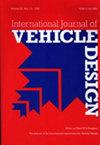具有有向拓扑的无人自治系统基于网络的编队控制
IF 0.7
4区 工程技术
Q4 ENGINEERING, MECHANICAL
引用次数: 1
摘要
研究了具有非线性动力学和有向拓扑的无人自治系统的编队控制问题。利用超宽带(UWB)定位系统,可以获得每个follower与相邻agent之间的相对位置。通过适当构造李雅普诺夫函数,导出了无人自主系统的编队控制条件。在此基础上,设计了编队控制器,使所有自主智能体形成编队,并达成速度共识。为了保证地层控制器的可行性,设计了一些参数。数值模拟验证了该控制方案的有效性。本文章由计算机程序翻译,如有差异,请以英文原文为准。
Network-based formation control of unmanned autonomous systems with directed topologies
The formation control of unmanned autonomous systems with nonlinear dynamics and directed topology is studied in this paper. By virtue of ultra-wide bandwidth (UWB) localisation system, the relative position between each follower and the neighbouring agents can be obtained. A formation control condition for unmanned autonomous systems is derived by appropriately constructing a Lyapunov function. Further, a formation controller is designed to form the formation of all autonomous agents and reach the consensus of velocities. Some parameters are designed to ensure the feasibility of formation controller. The effectiveness of the formation control protocol is verified by numerical simulations.
求助全文
通过发布文献求助,成功后即可免费获取论文全文。
去求助
来源期刊

International Journal of Vehicle Design
工程技术-工程:机械
CiteScore
1.10
自引率
0.00%
发文量
12
审稿时长
9 months
期刊介绍:
IJVD, the journal of vehicle engineering, automotive technology and components, has been established for over a quarter of a century as an international authoritative reference in the field. It publishes the Proceedings of the International Association for Vehicle Design, which is an independent, non-profit-making learned society that exists to develop, promote and coordinate the science and practice of vehicle design and safety.
Topics covered include
Vehicle engineering design
Automotive technology
R&D of all types of self-propelled vehicles
R&D of vehicle components
Interface between aesthetics and engineering
Integration of vehicle and components design into the development of complete vehicle systems
Social and environmental impacts of vehicle design
Energy
Safety.
 求助内容:
求助内容: 应助结果提醒方式:
应助结果提醒方式:


